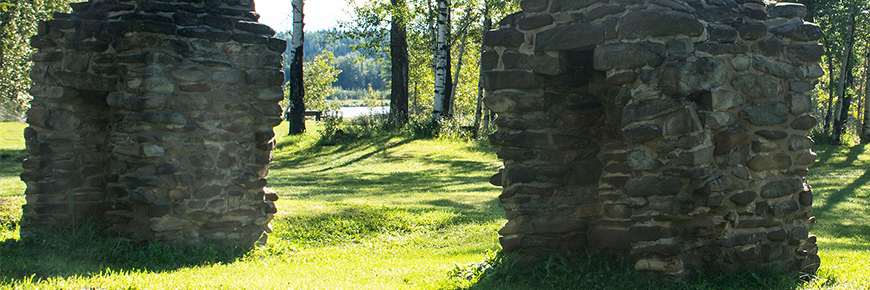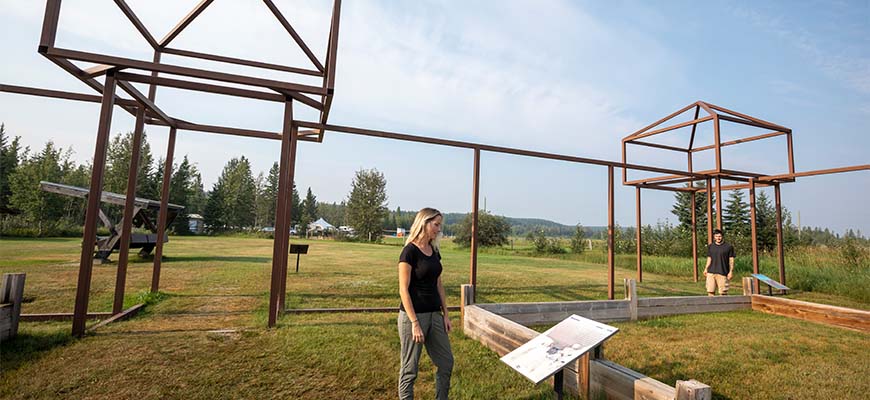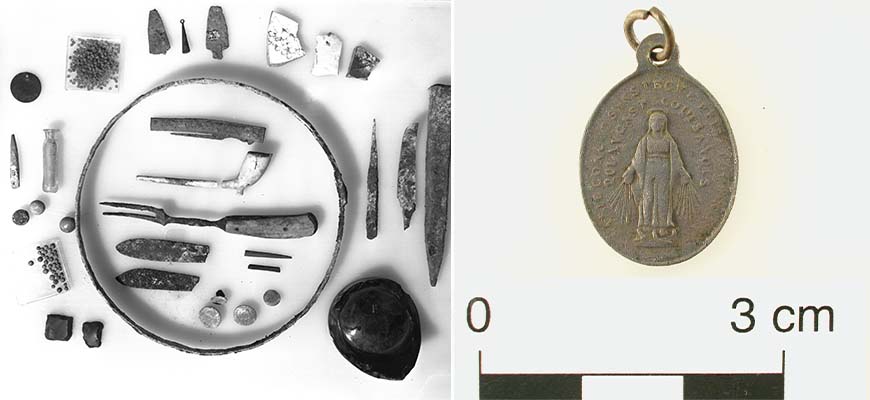
Archaeology
Rocky Mountain House National Historic Site
Archaeology is the study of remains of past activities. This study has a long and rich life at Rocky Mountain House National Historic Site. The first dig happened in 1937. Archaeologists continue to monitor and preserve our cultural treasures. Today new tools and methods help them piece together the puzzles of the past.
The Canada National Parks Act protects the land and artefacts at Rocky Mountain House National Historic Site. It is illegal to pick, collect or remove any living or non-living thing from a National Historic Site. This is so all Canadians will enjoy and benefit from our natural and cultural treasures.
The First and the Last
Fur trade posts were forts. “House” was the common name given to these posts. The last fur trade post at Rocky Mountain House National Historic Site is special to us. It is the first Alberta archaeological site within the Parks Canada System. Archaeologists across the country call it “Site 1R”.
We have always known the location of the last post (1868 -1875). The Hudson’s Bay Company called it Rocky Mountain House. The chimneys of this post still stand today. You can touch these remains on the Chimney Trail.
Here we protect the remains of four fur trade posts. The North Saskatchewan River swept away a fifth post years ago. That is one reason why we safeguard our heritage today. These remains enliven the past. They intrigue us, inspire us, and provoke us to see things differently.
Archaeology at the Site Today
Parks Canada archaeologists have unearthed thousands of artefacts on site. Our visitor centre displays a selection for you to examine. Archaeologists revisit our site often. They check the state of our cultural treasures. They also start new searches to solve more mysteries.

At first, we did not know there were four fur trade posts here. Discovery of these posts happened as follows:
- 1958 – Acton House of the Hudson’s Bay Company built in 1799 was found.
- 1966 – Excavations took place at Rocky Mountain House, the Hudson’s Bay Company Post of 1868-1875.
- 1975 – Rocky Mountain House of the North West Company built in 1799 was found.
- 1975 – Rocky Mountain House, the Hudson’s Bay Company post of 1835-1861 was found.
Archaeologists also searched for a fifth post. It once stood where the river runs now. The Hudson’s Bay Company built this temporary post (1865-1868). It housed fur traders and their families until the last post was finished.
Today, there are new seeking methods. New technology helps the discovery of remains without causing them damage. This is one example of how Parks Canada helps to protect and preserve the rich heritage of our country.

As you wander through these archaeological sites, pique your curiosity at the outdoor listening stations. Strike a conversation with one of our site interpreters. We are happy to guide your quest. Maybe you will solve the next mystery. All these services are included in your admission fee!
Related links
- Date modified :